HOME / ABOUT SHAW / Shaw Films, Malaya, Pre War
Shaw Films, Malaya, Pre War
Shaw Films Malaya
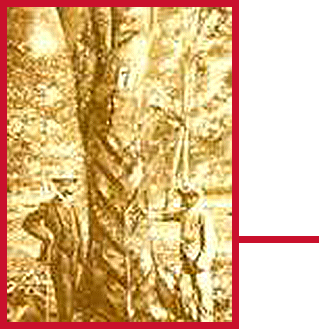
Causeway into Malaya
Malayan Rubber Estate
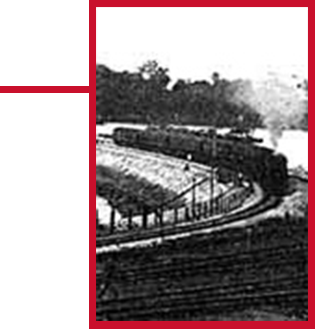
"We went to all the small towns all no cinema. We just tried a place, one place, two then next place. We just started like that. From this very beginning, we tried travelling shows, you know just like that. Some places had no cinema at all. We had a tent, you know, travelling."
-Tan Sri Runme Shaw, Pioneers of Singapore, Oral History
-Tan Sri Runme Shaw, Pioneers of Singapore, Oral History
With Run Run supervising Singapore, Runme took the train north to the larger towns like Ipoh, Kuala Lumpur and Penang, in order to establish business ties with local theatre owners. Ipoh was chosen as his base from where smaller towns could be explored for business potential. These 'market surveys' were done by car. With so much territory to cover, both brothers took turns driving
through the night, stopping only to drink water from pipes by the road. Where a trip was particularly grueling, even Run Run's wife Mei Chen joined in as a relief driver. Another participant of these ventures was Mr Chin Kim Fook, an early business partner of Runme who would eventually become General Manager of the theatres of Selangor, Seremban, Malacca, Johore, Pahang and Trengganu.

Many of these small towns did not have cinemas. One of the ways the Shaws would 'test' the market was by setting up their own temporary cinemas in open fields. Another means was by retrofitting the local Malay opera houses into crude cinemas in joint ventures with their owners. But wherever films proved very popular, the Shaws would build a permanent theatre.
Outfitting the theatres with equipment was the task of the engineering department in Singapore. It was headed by Mr Chow Deh Kong who sent his sound engineers Mr J. Ginsberg (chief) and Mr S.Y. Liok to the far flung sites throughout Malaya. Liok, an apprentice of Ginsberg, joined the company in 1938 as a liquor store man at the Great World Caberet. His knack with sound equipment impressed the bosses so
much that he was transferred to the engineering department at head office.
After the war, Liok was promoted to head the entire department with the departure of Chow to Penang and the resignation of Ginsberg. This was the first of many promotions for Liok who, in a career that spanned over 60 years, served as both General Manager and Director for Shaw Organisation.
After the war, Liok was promoted to head the entire department with the departure of Chow to Penang and the resignation of Ginsberg. This was the first of many promotions for Liok who, in a career that spanned over 60 years, served as both General Manager and Director for Shaw Organisation.
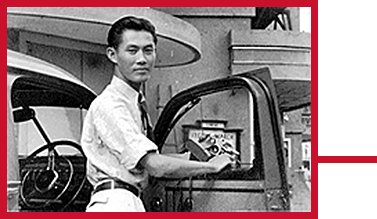
Mr Liok Sek Yu, sound engineer, 1940s
Construction of a new cinema, Malaysia, 1940s
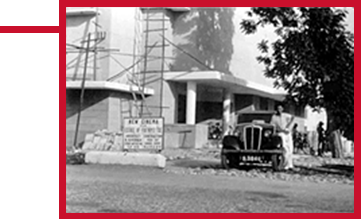
In setting up the cinemas through Malaya, the Shaws usually bought more land than was needed around the theatres as their first real estate ventures. They reasoned correctly that a successful cinema would benefit surrounding businesses thereby raising land values.
Eventually, with a growing chain of cinemas in Malaya, duties between the
Eventually, with a growing chain of cinemas in Malaya, duties between the
brothers had to be split. Runme eventually took charge of the northern half while Run Run ran the southern half, including Singapore.
To cater to the masses who lived in extremely rural areas, the Shaws operated a mobile cinema. Packed onto the back of vans went the films, projectors, generator, folding chairs and tents to the tin mine settlements, rubber
To cater to the masses who lived in extremely rural areas, the Shaws operated a mobile cinema. Packed onto the back of vans went the films, projectors, generator, folding chairs and tents to the tin mine settlements, rubber
plantations and lumber yards. Only two men were required for each operation. Upon arrival, the 'cinema' would be set up. This included the screen, folding chairs and a crude wire fence. The projector would be put under a small tent. Admission was only 5 cents. Not suprisingly, the best period of collections for this mobile cinema was just after 'pay-day' at the end of each month.

Petaling Jaya rural settlement, circa 1920s
Shaw Films, The Talkies 1925
"When sound was first introduced into films in Singapore and Malaysia in 1936, it was a great novelty. All our cinemas were doing enormous business throughout Singapore and Malaysia. We were the first ones to produce talking pictures in Hong Kong and in Shanghai and with those new talking pictures, our business took off."
- Sir Run Run Shaw, Business Times, December 19, 1984
- Sir Run Run Shaw, Business Times, December 19, 1984
'Talking' films with sound brought the film business to new frontiers. The Jazz Singer was the first film with sound shown in Singapore in 1929. This movie starred Al Jolson. By 1936, films with audible dialogue from the West were dominating screens all over the island like like Laurel and Hardy and the Marx Brothers.
As pioneers, the Shaws were already
As pioneers, the Shaws were already
experimenting with the new technology that married visuals with the wonders of sound since 1931. With equipment purchased from the US by Run Run, the brothers churned out the first movie in China to have a soundtrack entitled 'The Nightclub Colours'. It was a crude affair produced in the spanking new Unique Film Productions studio situated at Ganshi Dong Road (the old studio having been razed to the ground by a fire).
Their first quality effort that incorporated the technology of sound was also the first Cantonese musical.
'Normal Dragon' (Bai Jin Lon, 1933) starring two popular Cantonese opera stars (one of whom was the legendary Sit Kok Sin) cost about US$1500 to make, but grossed over US$85,000 in its first run in Canton. The collaboration between the Shaws and Sit began soon after Runje was introduced to her through mutual friend Tse Yik Chi, the husband of famed actress Wong Man Lei.
'Normal Dragon' was released in Hong Kong in 1933 and it played to packed
'Normal Dragon' (Bai Jin Lon, 1933) starring two popular Cantonese opera stars (one of whom was the legendary Sit Kok Sin) cost about US$1500 to make, but grossed over US$85,000 in its first run in Canton. The collaboration between the Shaws and Sit began soon after Runje was introduced to her through mutual friend Tse Yik Chi, the husband of famed actress Wong Man Lei.
'Normal Dragon' was released in Hong Kong in 1933 and it played to packed
Prewar Elmo projector, 1930s
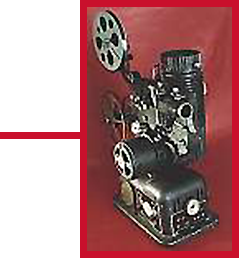
houses for over a year. Realising the promise of this new technology, the brothers were encouraged to perfect their utilisation of it. 'Romance of the Opera' (Ge Tai Yan Shi, 1934), featuring just one popular Cantonese opera star
closely followed. It was an immediate hit in Shanghai, Singapore and Hong Kong.
In Hong Kong, the film opened in May 1934 at Central Theatre and played for several months throughout the circuit.
In Hong Kong, the film opened in May 1934 at Central Theatre and played for several months throughout the circuit.
Next Story